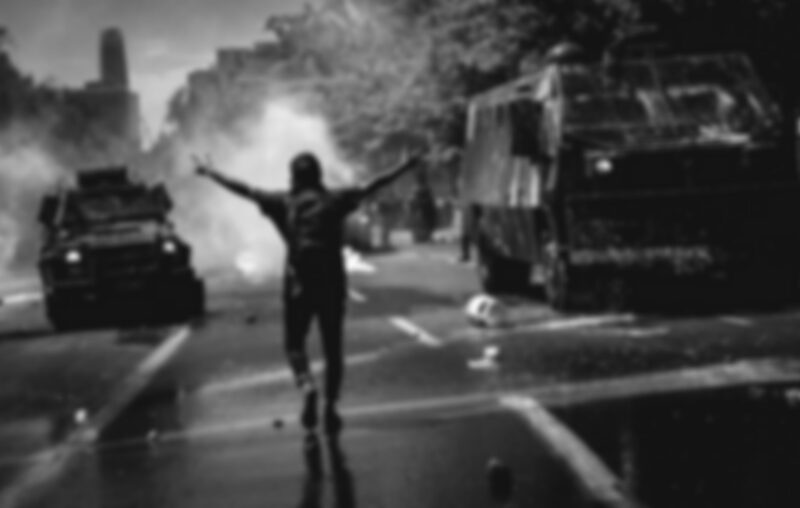
Liberty lovers rightfully disdain violence, condoning it only when committed in self-defense, after violation of the non-aggression principle. The strategy finds empirical grounding in the success of employing tit-for-tat in a repeated game of Prisoners’ Dilemma (you trade, I trade; you raid, I raid).
None of that, though, gets at why (too) many people engage in what appears to be senseless violence like mass shootings or terroristic attacks. It’s a shame the matter cannot be investigated more fully empirically, because many of the most violent perpetrators die, and if they leave the world a manifesto, officials often censor it. Seemingly irrational behaviors, however, can be modeled well enough to produce insights for policymakers to ponder despite the dearth of empirical data. Models simplify complex phenomena to render their essence more understandable; Good models do not oversimplify.
In 2010, I teamed with Amherst College economist Christopher G. Kingston to publish a game theory model of dueling in the Southern Economic Journal. Although we developed the model with explicit reference to “pistols at ten paces” duels in antebellum America, it can be generalized to help people to think through the policies and conditions most likely to generate violence.
Most people intuit that violence becomes more likely when an individual or polity can plausibly calculate that the present value of the expected total benefits of violence exceeds the present value of the expected total costs of violence. People who have “nothing to live for,” especially if they can be convinced that rewards await them in an afterlife, are more likely to turn to violent means than those who envision themselves sitting in hot tubs sipping on fine wine and gorging on surf and turf for the rest of their long lives.
So it is easy to imagine scenarios where somebody might voluntarily risk life and limb to protect hearth and home, or their livelihood. To the extent that their causes were documented, however, most antebellum American duels did not entail conflicts over tangible resources like land or the love of a woman. Many involved the intangible concept of creditworthiness, or “honor” as it was then often expressed.
Here is the extensive-form of our model:
In plain English, if the lender and borrower do not contract, there are no gains from trade (0, 0 payoff). If they do contract, the project succeeds, and the borrower is honorable/creditworthy, the loan is repaid and both parties benefit (1, 1). If the project fails or the borrower is dishonorable, then all heck breaks loose (all those variable payoffs, many negative or zero) because under certain conditions, like an underdeveloped credit market and unpredictable outcomes of the duel, it’s rational to appear on the “field of honor” to re-establish creditworthiness, even at the risk of joining Alexander Hamilton and his son Philip in the list of those killed.
If we change Lender to leader (i.e., a government) and Borrower to individual (e.g., citizen or denizen), lend to lead (i.e., implement some set of policies), repay to pay (i.e., taxes, allegiance), the game would read in plain English: If the leader does not lead, the individual will not pay and the result is a failed state (0,0). If the leader leads, the policies interact with the real world (nature), where they may succeed or fail. If they succeed, and the individual is virtuous, both parties gain (1, 1). If the individual is not virtuous, though, he may not pay, potentially triggering a violent response on the part of the state.
If the policy fails its real-world test, violence may also erupt under certain conditions, like when the individual thinks the leader has deliberately failed her and that the leader can be defeated, killed, or replaced with sufficient probability at sufficiently low cost.
Ergo, any leader truly interested in minimizing violence, saving lives, and so forth, would only implement policies likely to succeed and likely to produce virtuous individuals. There is only one policy almost certain to succeed and to create virtuous individuals, or at least individuals who expect to be wealthy enough that they act virtuously because they do not wish to risk confrontation with the state. That policy, of course, is communism. Just kidding! It’s the opposite of communism, something called economic freedom, or classical liberalism applied to policy matters. Note that the model also implies that leaders should assiduously avoid policies that create rents (unearned profits) because that creates non-virtuous individuals tempted to avoid taxes or service even at the risk of violence.
In short, allow individuals to build it and make clear that they cannot force others to build it for them, and they will build it. And, most likely, they will not want to blow it up.


0 Comments